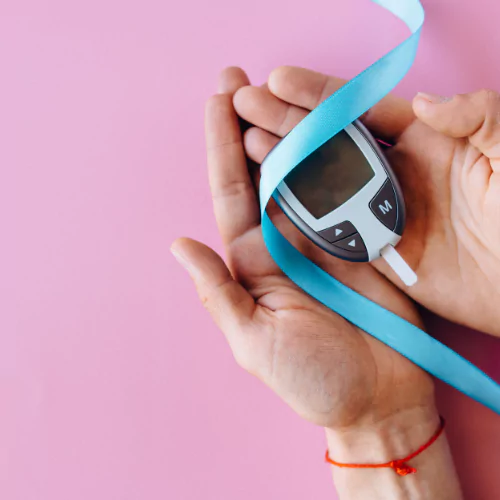Type 2 Diabetes – Causes, Symptoms, and Management

Type 2 diabetes is a chronic condition that affects how the body processes blood sugar (glucose). It is the most common form of diabetes, impacting millions of people worldwide. Unlike Type 1 diabetes, which is primarily caused by an autoimmune response, Type 2 diabetes develops over time and is often linked to lifestyle factors such as diet, physical activity, and obesity.
Causes and Risk Factors
Type 2 diabetes occurs when the body becomes resistant to insulin, a hormone that regulates blood sugar levels. Over time, the pancreas struggles to produce enough insulin, leading to high blood sugar levels. Several factors contribute to the development of Type 2 diabetes, including:
- Genetics – A family history of diabetes increases the risk.
- Obesity – Excess weight, especially around the abdomen, is a major risk factor.
- Sedentary Lifestyle – Lack of physical activity can lead to insulin resistance.
- Unhealthy Diet – Diets high in processed foods, refined sugars, and unhealthy fats contribute to the condition.
- Age – The risk increases after the age of 45, although it is becoming more common in younger individuals.
- Polycystic Ovary Syndrome (PCOS) – Women with PCOS are at a higher risk.
Symptoms of Type 2 Diabetes
Many people with Type 2 diabetes may not experience symptoms in the early stages. However, as blood sugar levels rise, common symptoms include:
- Frequent urination
- Increased thirst
- Unexplained weight loss
- Fatigue
- Blurred vision
- Slow-healing sores
- Numbness or tingling in the hands and feet
If left untreated, Type 2 diabetes can lead to serious complications such as heart disease, kidney damage, nerve damage, and vision problems.
Diagnosis and Treatment
A doctor can diagnose Type 2 diabetes through blood tests that measure blood sugar levels, such as:
- Fasting Blood Sugar Test – Measures blood sugar after an overnight fast.
- A1C Test – Provides an average blood sugar level over the past two to three months.
- Oral Glucose Tolerance Test (OGTT) – Measures blood sugar before and after consuming a sugary drink.
Managing Type 2 Diabetes
Although there is no cure for Type 2 diabetes, it can be effectively managed through lifestyle changes and medication.
Healthy Eating
- A balanced diet rich in whole grains, lean proteins, healthy fats, and vegetables helps regulate blood sugar.
- Reducing processed foods and sugary drinks can prevent blood sugar spikes.
Regular Exercise
- Physical activity, such as walking, jogging, or strength training, improves insulin sensitivity.
- Experts recommend at least 150 minutes of moderate exercise per week.
Weight Management
- Losing even a small amount of weight can improve blood sugar control and reduce the risk of complications.
Medications
- Some people may need medications like metformin or insulin therapy to control blood sugar levels.
Blood Sugar Monitoring
- Regularly checking blood sugar levels helps track progress and make necessary adjustments.
Preventing Type 2 Diabetes
For those at risk, prevention strategies include maintaining a healthy diet, exercising regularly, and monitoring blood sugar levels. Lifestyle changes, such as reducing refined carbohydrates and increasing fiber intake, can significantly lower the risk.
Conclusion
Type 2 diabetes is a manageable condition with the right lifestyle choices and medical care. Early detection and proactive management can prevent complications and improve quality of life. If you suspect you have diabetes or are at risk, consult a healthcare professional for guidance on prevention and treatment.





